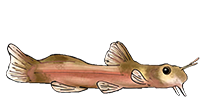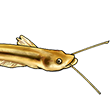Rich, I am glad to be back breeding fish again, even though it took me a few weeks to read and search through all the Forums it seems like I didn’t miss out that much.
There has been a lot of theories & misconception about breeding Syno.
Petricola, I'm here to prove or disprove some of what I read, this is just based on my experience and can be taken with a grain of salt, Petricolas can breed all year long I think the reason why they breed more in the winter months because of the huge temp. Change and maybe the seasonal change, also the time of year where its start raining, when I got my original 5 fish it was also winter time l bought them from a guy in Northern California I had to stay overnight in up north because the PCCA meetings ends late. The fish endured another 7-hour drive back home and they end up in a small tank l believe it was a 5 gallon tank to quarantine them and to my amazement they
spawned. So all I did was trigger them with clean warm water.
I use two heaters one set about 72-74F and the other one around 78-80F fish where originally bred in 30 gallon flats then later to ten gallon tanks don’t do water change for a month or two when the females are visibly gravid do 110% water change clean the sponge filter, make sure you use a finer mesh sponge filter because the fry would get stuck in the larger mesh, wipe down the entire tank the cleaner the tank the better the hatch rate, add an air stone, cover the bottom of the tank with Mexican river rocks and plug the warmer heater, a friend of mine used the green filter floss that Eheim used for their canister filter, the next morning they would have
spawned then move them in the next tank then the whole cycle goes on. The eggs start hatching 18 hrs. Later, the eggs are very tiny as you can see on the pictures the black line on the eggs is a hair strand it may sound simple but it has worked for me for several years and a few thousand petricolas produced with just 2 males and 2 females .
One female can produce about a thousand eggs if you can count how many eggs in the picture you get a price, I would say half of the eggs would hatch I have tried adding methylene blue in the tank but still get the same result I do paint the tanks side and bottom black and keep it dark.
It seems like there are many people that are stuck to the idea of Synodontis
petricola not being able to eat newly hatched brine shrimp, if you think about it, this fish comes from Lake Tanganyika where the Synodontis multipunctatus comes from in where it could eat eggs much larger than itself below are pictures of 5-6 day old
petricola eating powdered food this is the stage where they would start eating, I use Mike Reeds no BS fry food, it comes in fine powder and a larger size when they get a little bigger, you can get it from
www.mreed.com, I used to feed them newly hatched brine shrimp but later found out it was much easier to just squirt some powdered food in the tank with them, I also feed them cyclop eeze the red powdered food. there growth rate is all dipendent on food, water change, and temperature.
Dan, the filter floss is used to separate the eggs so that the breeders would not eat them you do not have to use the floss this is what my friend used to breed his fish I use river rocks because marbles will roll around the tank when you start removing them, if you catch them when they are in breeding frenzy you don’t even need the floss or rocks because they are very pre-occupied with breeding, but then you have to net them out as soon as they are done most of the photos where taken in the year 2002 back then I was using a 30 gallon flat tank, I just started breeding my
petricola now after 3 years of not breeding, the breeders where left at a friends tanks and apparently there is only one pair left of the original 4 fish and a lot of there fry that are larger than the parents, I am having a hard time with them as well but I am breeding the fish in ten gallon tanks, I am lucky if I get 50 fry, I'm not worried about that though.








